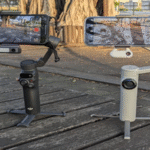Advertisement
In recent years, demand for Solar LED Street Lamp with Motion Sensor has surged as cities, industries, and rural areas shift toward renewable energy and energy independence. According to the International Renewable Energy Agency (IRENA), global solar lighting installations have grown by over 35% annually over the past decade. These intelligent lighting systems not only reduce reliance on grid power but also ensure continuous lighting in remote or off-grid areas. However, one of the most critical design considerations is adequate backup time for multiple nights, especially in areas with fluctuating sunlight.
Solar LED Street Lamp with Motion Sensor: Defining Energy Independence
The energy independence of the solar led street lamp with motion sensor means the lighting system can operate independently, without relying on the grid. The system captures solar energy during the day, stores it in batteries, and powers the LED lights at night. This independence is crucial for rural electrification, innovative city projects, and disaster-prone areas with unstable grid power.
The concept of energy independence extends beyond solar power generation; it also encompasses efficient energy storage and energy consumption control. Motion sensors play a key role in improving energy efficiency by adjusting light intensity based on human or vehicle movement. When no activity is detected, the lights dim to conserve power; when motion is detected, they immediately brighten. This intelligent control extends battery life by 30% to 50%, ensuring continuous lighting even on cloudy days.
Designing a Solar LED Street Light with a Motion Sensor: Key Components and Their Interactions
A reliable solar led street lamp with motion sensor relies on four main components: solar panels, LED lamps, battery storage, and a controller. The performance of each element directly impacts the system’s backup time and efficiency.
Solar Panels: Photovoltaic (PV) modules convert sunlight into electricity. The efficiency of a solar panel determines the amount of energy it can store per unit time. For compact systems, high-efficiency monocrystalline silicon panels are preferred.
Battery Storage: Batteries store excess solar energy for use at night. Lithium-ion batteries or lithium iron phosphate (LiFePO₄) batteries are popular due to their long lifespan and high depth of discharge.
LED Lamps: The wattage and luminous efficacy of an LED lamp affect overall energy consumption. Modern LED lamps with outputs up to 180 lumens per watt significantly improve system efficiency.
Controller and Motion Sensor: The controller manages charging, discharging, and lighting schedules, while the motion sensor dynamically adjusts brightness to optimize energy use.
By synchronizing these components, solar street light achieve maximum efficiency. For example, an integrated motion sensor allows the LEDs to operate at 30% brightness when inactive and switch to 100% brightness when motion is detected, saving energy while maintaining visibility and safety.
Calculating Battery Backup Time
Determining the battery backup time for a solar led street lamp with motion sensors with motion sensors requires understanding the relationship between power consumption, battery capacity, and available sunlight hours. Backup time determines how long the street light can operate without additional solar input.
To calculate this, the following formula is commonly used: Backup time (hours) = Battery capacity (Wh) ÷ Lamp wattage (W)
For example, a 12.8V 30Ah lithium iron phosphate battery provides 384Wh of power. If the LED light consumes an average of 10W, the backup time is approximately 38 hours, equivalent to more than three nights of continuous operation. However, designers must also consider system losses (approximately 10-15%), temperature effects, and depth of discharge (DoD). An appropriately sized battery system should provide 3-5 nights of battery life, especially in remote areas. Using solar-powered LED streetlights with motion sensors can help extend battery life by reducing average power usage.
Optimizing Motion Control for Energy Efficiency
The addition of motion sensors transforms standard solar-powered lanterns into innovative, energy-efficient solutions. For solar-powered LED streetlights equipped with motion sensors, optimizing motion detection parameters can significantly improve system efficiency and backup time.
Motion sensors detect changes in infrared radiation emitted by a person or vehicle. Once triggered, the luminaire ramps up to full power for a preset duration and then dims again. This operating mode significantly reduces energy consumption compared to fixed-output luminaires. Furthermore, a practical configuration can set the lighting brightness to 30% when idle and 100% when detected. This configuration not only extends battery life but also reduces light pollution and environmental impact. Advanced systems even integrate microwave radar sensors for broader coverage and faster response times.
Climate and Installation Considerations
When designing a solar led street lamp with motion sensor, environmental factors must be considered to ensure long-term, reliable operation. Geographical location directly impacts sunlight exposure, panel tilt angle, and battery performance. In tropical climates with abundant sunlight, smaller solar panels and batteries may be sufficient. However, in high latitudes or cloudy regions, the system must be larger to compensate for the reduced solar radiation. The mounting angle of the solar panels should be optimized to maximize sunlight absorption year-round.
Temperature also affects battery efficiency. For example, lithium batteries lose capacity in cold weather, while extreme heat accelerates performance degradation. To mitigate this, the battery housing should be well-ventilated and weatherproof. Furthermore, dust accumulation on the panels can reduce efficiency by up to 20%, making regular maintenance essential.
Designed for Energy Independence and Reliability
In summary, solar-powered LED street lights with motion sensors embody modern renewable lighting technology, combining sustainability with intelligent energy management. By focusing on component optimization, proper sizing, and smart motion control, users can ensure reliable, continuous operation for multiple nights, even in adverse weather conditions. The path to true energy independence lies in understanding how solar input, storage capacity, and motion-based lighting interact to achieve maximum efficiency.










